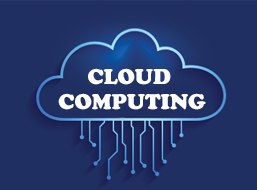Table of contents
|
1. Why Is Data Cleaning Important? |
|
2. Key Data Cleaning Techniques
|
|
3. Essential Data Cleaning Tools
|
|
4. Bonus: Automation Tools for Data Cleaning |
|
5. Learning Data Cleaning Practically |
|
6. Common Mistakes to Avoid in Data Cleaning |
|
7. Final Thoughts |
If you’re starting your journey in data science, one skill you cannot skip is data cleaning. No matter how advanced your machine learning models are, if your data is messy, your results will be unreliable.
In this blog by Apponix Academy, let’s explore the most essential data cleaning tools and techniques you need to know. We’ll keep it simple, conversational, and practical so you can apply these tips immediately in your projects.
Why Is Data Cleaning Important?
First, let’s understand why data cleaning is crucial.
Imagine trying to build a house with broken bricks and uneven tiles. Will it stand strong? The same goes for data. Dirty data leads to wrong analysis, poor business decisions, and inaccurate predictions.
Data scientist say they spend 60-80% of their time cleaning and preparing data before any analysis or modeling. That’s why learning effective tools and techniques early will save you hours later. At Apponix Academy, we always teach students to prioritise data quality before building models.
Key Data Cleaning Techniques
1. Handling Missing Values
Missing data is common. You might see blank cells or “NA” in your dataset. Here’s how to handle them:
-
Remove rows with missing values if they are very few and not crucial.
-
Impute missing values with the mean, median, or mode for numerical data.
-
Use forward or backward fill for time-series data.
-
Predict missing values using regression or ML models (advanced).
2. Removing Duplicates
Sometimes the same data gets recorded twice. Always:
-
Use drop_duplicates() in Python (pandas) or distinct() in R to remove duplicate rows.
-
Check for duplicates based on unique identifiers like IDs or emails.
3. Correcting Inconsistencies
Spelling mistakes or inconsistent labels create problems in analysis.
For example, your city column might have entries like:
-
Bangalore
-
Banglore
-
bengaluru
All refer to the same city. Clean them by:
-
Standardizing text with string replacement.
-
Using replace() in pandas or data cleaning tools to unify categories.
4. Filtering Out Outliers
Outliers can skew your results if not genuine. You can:
-
Visualise with boxplots to detect extreme values.
-
Use statistical methods (IQR rule or Z-score) to identify outliers.
-
Remove them if they’re errors, or treat them with capping methods.
5. Data Type Conversion
Sometimes numbers are stored as text, or dates are in string format. Convert data types properly for accurate analysis.
Example:
-
Convert “2025-07-14” from string to datetime.
-
Convert “$1000” from a string to a number after removing currency symbols.
Essential Data Cleaning Tools
Let’s look at the top tools that make data cleaning faster and easier for students and professionals.
1. Microsoft Excel
Yes, the simplest tool is still widely used.
Why use Excel?
-
Ideal for small datasets
-
Easy filters and sorting
-
Find and replace inconsistencies
-
Basic data type conversion
At Apponix Academy, Excel is the starting point for data cleaning practice before moving to programming tools.
2. Python (pandas)
If you’re serious about data science, learn pandas. It is powerful and scalable.
Key pandas cleaning functions:
-
isnull() and fillna() for missing values
-
drop_duplicates() for duplicates
-
replace() for correcting values
-
astype() for data type conversions
-
apply() for custom cleaning functions
Our data science course in Bangalore by Apponix Academy covers pandas extensively with practical datasets.
3. R (dplyr & tidyr)
R is popular for statistical data cleaning.
Key R functions:
-
filter() to remove rows
-
mutate() to transform data
-
replace_na() to handle missing values
-
distinct() to remove duplicates
4. OpenRefine
Formerly Google Refine, it’s a powerful open-source tool for data cleaning.
Best for:
-
Cleaning messy text data
-
Clustering similar text entries for correction
-
Exploring large datasets quickly
5. Power Query (Excel & Power BI)
Power Query automates data cleaning workflows within Excel and Power BI.
Why use Power Query?
-
Reusable cleaning steps
-
Intuitive GUI for non-programmers
-
Integration with BI dashboards
6. Trifacta Wrangler (Now Alteryx Designer Cloud)
A great tool for advanced data wrangling with an easy interface.
Features:
-
Visual cleaning suggestions
-
AI-powered transformations
-
Integration with cloud data
7. SQL
For data stored in databases, SQL is essential.
SQL cleaning techniques:
-
IS NULL and COALESCE for missing values
-
UPDATE for corrections
-
DELETE for removing duplicates
At Apponix Academy, SQL cleaning techniques are taught with real project-based examples to build confidence.
Bonus: Automation Tools for Data Cleaning
As you grow in data science, automating cleaning tasks saves time.
Popular options:
-
Python scripts with scheduled runs
-
Apache Airflow for automated pipelines
-
Talend for enterprise-level data integration and cleaning
Learning Data Cleaning Practically
The best way to master these techniques is to practice on real datasets. Websites like Kaggle, DataCamp, and GitHub provide open datasets for you to try cleaning exercises.
Tip: Choose a structured data science course in Bangalore by Apponix Academy to learn these tools with expert guidance. Hands-on projects in such courses build your confidence for job interviews and real projects.
Common Mistakes to Avoid in Data Cleaning
-
Deleting too much data: Removing missing values without checking the impact
-
Ignoring outliers: They might be genuine business insights
-
Not backing up raw data: Always keep the original data safe
-
Assuming missing values are random: Analyse patterns before deciding
-
No documentation: Keep records of cleaning steps for reproducibility
Final Thoughts
Data cleaning is not glamorous, but it’s powerful.
Clean data builds trust in your analysis.
Invest time to learn these tools and techniques confidently.
As the saying goes in data science:
“Garbage in, garbage out.”
Clean data is the foundation of good decisions, accurate models, and successful data-driven careers.
If you’re serious about becoming a data analyst or data scientist, start practicing these techniques today. For structured learning, join the data science course in Bangalore offered by Apponix Academy and build your skills with expert mentorship.





